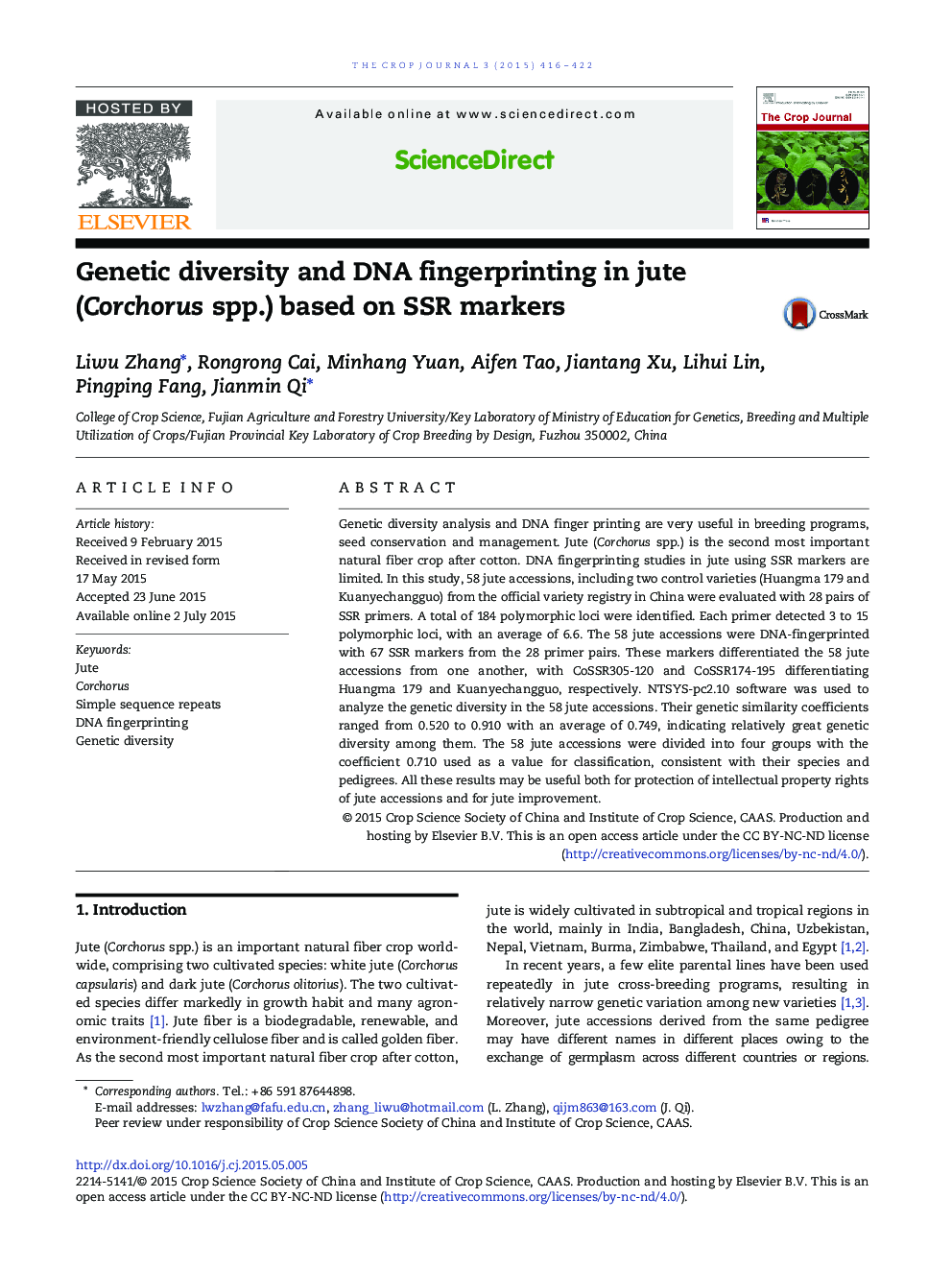| Article ID | Journal | Published Year | Pages | File Type |
|---|---|---|---|---|
| 2079445 | The Crop Journal | 2015 | 7 Pages |
Genetic diversity analysis and DNA finger printing are very useful in breeding programs, seed conservation and management. Jute (Corchorus spp.) is the second most important natural fiber crop after cotton. DNA fingerprinting studies in jute using SSR markers are limited. In this study, 58 jute accessions, including two control varieties (Huangma 179 and Kuanyechangguo) from the official variety registry in China were evaluated with 28 pairs of SSR primers. A total of 184 polymorphic loci were identified. Each primer detected 3 to 15 polymorphic loci, with an average of 6.6. The 58 jute accessions were DNA-fingerprinted with 67 SSR markers from the 28 primer pairs. These markers differentiated the 58 jute accessions from one another, with CoSSR305-120 and CoSSR174-195 differentiating Huangma 179 and Kuanyechangguo, respectively. NTSYS-pc2.10 software was used to analyze the genetic diversity in the 58 jute accessions. Their genetic similarity coefficients ranged from 0.520 to 0.910 with an average of 0.749, indicating relatively great genetic diversity among them. The 58 jute accessions were divided into four groups with the coefficient 0.710 used as a value for classification, consistent with their species and pedigrees. All these results may be useful both for protection of intellectual property rights of jute accessions and for jute improvement.
